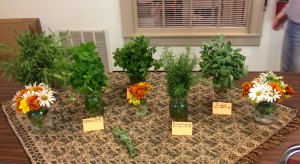Watching Cowspiracy was very shocking and devastating. One of the major things that I found shocking was that many environmental organizations ignored the fact that animal agriculture was the number contributor to greenhouse gases in our atmosphere. Cows produce 51% of greenhouse gases- more than the entire transportation section. With a big issue like this you’d think environmental organizations would draw more attention to this since they want to save the environment, right? Unfortunately the opposite happens and they refuse to bring attention to the subject. In fact, environmental organizations depend on memberships to get their funding. A ton of people eat meat and if you start telling people to change their lifestyle and stop eating meat for the sake of our environment they might withdraw their membership and the organizations lose money.
In order to get meat to the table, a lot of grassland is needed. Land is becoming limited because of our growing human population. So forests get cut down and deforestation becomes an issue. Once you have grasslands, you’ll need a lot of water for cows to drink and survive. Raising livestock in the United States in total consumes 32 trillion gallons of water. While the cow is growing at an extremely, unhealthy fast rate they are releasing tons of methane into our atmosphere. A lot goes into the animal agriculture industry and a lot of bad stuff comes out of it.
A devastating scene in the movie was when a backyard duck farmer cut a ducks head off in front of another duck and a little girl. The little girl didn’t even flinch and asked why the duck was still moving. Later on the duck farmer explained what he did was “just something that had to be done”. It was extremely heartbreaking.
Cowspiracy was filled with a lot of good knowledge and made you really think about what other issues are being hidden from consumers. Towards the end of the movie it was really pushing the idea of not eating meat at all and how cutting down meat consumption won’t help. I don’t completely agree with this. I believe that anyone can help make a positive change to our environment. Realistically, every single person will not stop eating meat but if people are aware of what is going on in our country and find out that there are solutions to these issues I think that will start a great domino effect.


